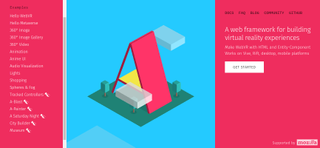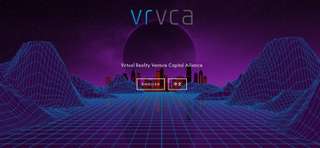Remember all the fuss about stereoscopic 3D a few years back? How we were promised that all TV and movies would be eventually be 3D, and everyone in sports bars would soon be watching the game through polarised glasses?
Instead, 3D movies have become more of a niche, and production of 3D TVs has pretty much ground to a halt. So you might think that all the fuss about VR is more of the same. But you’d be wrong.
Now that virtual reality is making its way onto the web, we predict it’s going to be a very big deal in the coming years. And that everyone involved in web design is going to be affected in some way or other.
In this post, we explore five ways VR is changing web design, and why this is making it a very exciting time to be a web designer.
01. VR is moving to the browser

Until recently, to access any kind of VR content online, you needed two things: a headset and an app of some sort. But that’s all changing, with a number of big-name web browsers working on support for WebVR, the open standard that makes it possible to experience VR in your browser.
Their plan is to ship to consumers this year. This means that ordinary web visitors will be able to just click a button and start interacting with VR content, without any messing around with downloads. And that is going to massively accelerate take-up.
The WebVR API is currently available in Firefox Nightly builds, in Chrome 56+ for Android and experimental builds of Chromium for Windows, and in the Samsung Internet Browser for Gear VR.
02. We're way past the demo stage

Until recently, WebVR experiments were strictly about proof of concept and showy demos. But now developers are starting to surpass that stage, to work on real apps that can be useful for real people.
For instance, Peter O'Shaughnessy, developer advocate at Samsung Internet, describes how he helped prototype a VR web app with the world’s leading tourism company in this post. Sotheby’s International Realty is another company getting into VR, with its website now supporting 3D and VR tours. And we’d expect more and more clients will start demanding VR services from creative agencies. Because, well...
03. A new world pf possibilities is opening up

Imagine, say, you’re on Hotels.com but not sure whether to book a particular hotel. To get a real feel for the place, wouldn’t you like to just put on a headset, click a button, and virtually wander around the whole hotel at your leisure?
Or what about the mass of information on the website itself? Rather than navigate a cluttered layout on your desktop screen, how would you like to move all the various content about in virtual space, like in Minority Report?
Can’t make it to a conference on the other side of the world? Perhaps the organisers can offer you a way to participate using VR, suggests Peter O'Shaughnessy in this post.
He also muses that San Francisco’s housing crisis could be solved through the introduction of remote VR working, and points to hospital trials that suggest escapist VR can work as effective pain relief. In fact, there are so many different ways that VR could make using the web easier and more useful, we haven’t even begun to think about them.
But consider this: if the text-based web has made the world smaller and brought people closer together, how much will the VR web push that envelope?
04. It's getting easier to create content

While the mass production of headsets is making it easier for consumers to access VR content on the web, the increasing availability of open source libraries is making it easier and easier to create that content.
Popular frameworks for creating VR content such as A-Frame, PlayCanvas, Sketchfab and Vizor mean that even novice developers can use to build VR experiences in very little time. To prove how easy it is to get started, Anjney Midha has prepared this 10 minute tutorial on how to build a Martian landscape in WebVR.
05. It's where the money's heading

Venture capitalists are voting with their wallets for VR right now, with a consortium called the Virtual Reality Venture Capital Alliance announcing $10 billion-worth of investment in VR and augmented reality projects. It's going to want to see some return on that capital, so don’t expect development of VR projects to peter out any time soon.
Indeed, the VR/AR market is forecast to be worth a staggering $162 billion market by 2020. And this is not just wishful thinking, but a thoughtful, long-term view of the potential of something tech guru and entrepreneur Mark Pesce believes “can become the most important cultural advance since writing. That’s not an exaggeration .”
“Knowledge and experience are not the same thing,” he reasons, in this post. “You can transmit knowledge by writing it down. You can not transmit experience through words. Experience must be – experienced [...] The web gave us the capacity to share knowledge on a global scale. VR does the same thing for experience.”
If he’s right, we’re currently living through a world-changing epoch in our history. Might be a good plan to get on board soon.

